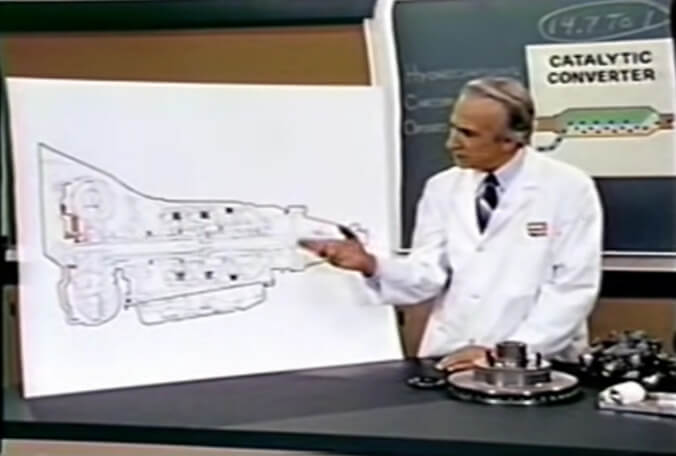The turboencabulator was the most complicated device never invented

This week’s entry: Turboencabulator
What it’s about: Just your typical collection of hydrocoptic marzlevanes fitted to an ambifacient lunar waneshaft. In 1944, British grad student John Hellins Quick wrote of a nonexistent machine in the pages of the Institution of Engineering and Technology’s Students’ Quarterly Journal, using a ridiculous abundance of nonsense technobabble not seen outside late-season Star Trek: The Next Generation. Engineers the world over embraced the device—whose main winding “was of the normal lotus-o-deltoid type placed in panendermic semi-boloid slots in the stator”—and the turboencabulator’s legend lives on more than 75 years later.
Biggest controversy: Time magazine, not renowned for their sense of humor, got in on the joke in 1946, printing a straight-faced description of the turboencabulator that had readers baffled. Many people wrote in to complain that the magazine was using too much technical jargon for the layperson; others guessed the device was everything from a high-powered motor to a “wonderful machine for changing baby’s diapers.” One reader suggested, “it sounds like a dictionary that has been struck by lightning.”
Thing we were happiest to learn: People have taken the joke very, very far over the years. General Electric slipped a page on the turboencabulator into its 1962 handbook, the rest of which contains specs for actual GE products. In 1977, a crew working with General Motos put in some unpaid overtime to make a fake training film about the turboenabulator, basing their script on Quick’s original article from 1944. 11 year later, Chrysler made its own spoof showing how the turboencabulator is serviced (the Wiki page links to both videos, along with an introduction to Rockwell Automation’s Retro Encabulator). In 2016, nonprofit PATH posted an April Fools’ video describing the Micro Encabulator as a, “game-changing global health technology featuring hydrocoptic miniaturization and advanced panametric fam alignment.”
Thing we were unhappiest to learn: Describing a made-up device with made-up words is more or less the pinnacle of engineer humor, and there isn’t a lot of competition, at least according to Wikipedia’s Tech Humour category, which only lists three pages—this one, FFF system (a joke about how impractical Imperial measurements can be, namely the furlong, firkin, and fortnight), and List of Humorous Units of Measurement (which includes FFF), and sounds like a real knee-slapper.
Best link to elsewhere on Wikipedia: Isaac Asimov did for one scientific discipline what J.H. Quick did for mechanical engineering. Besides being a renowned author of science fiction and nonfiction, Asimov had a doctorate in chemistry. While doing doctoral research, he observed catechol dissolving the instant it contacted water. Asimov mused that, if the substance were any more soluble, it would dissolve before it touched the water. So he wrote a scientific paper about thiotimoline, an imaginary molecule whose chemical bonds reached into the future and the past, causing the material to dissolve in advance of contact with water. He published the article in Astounding Science Fiction, on the condition that it run under a pseudonym, worried that Columbia might think him less than serious in his pursuit of his doctorate. The magazine didn’t comply, and the Columbia University faculty slipped a question about thiotimoline into Asimov’s dissertation defense, acknowledging that they were in on the joke. He got his degree, and thiotimoline made it into several of his innumerable short stories.
Further Down the Wormhole: G.E.’s Instrument Department, which was responsible for the turboencabulator page in the 1962 handbook, was located in Lynn, Massachusetts. For a town of less than 100,000 people, Lynn has numerous claims to fame: Frederick Douglass lived there when he wrote his first, groundbreaking memoir, Narrative Of The Life Of Frederick Douglass, An American Slave; General Electric was formed there when Lynn’s Thomson-Houston Electric Company merged with Schenectady’s Edison Electric; and it was home to the first iron works, the first fire engine, the first baseball game played under artificial light, and the first roast beef sandwich. Besides Douglass, past residents include 60 Minutes journalist Lesley Stahl, Social Distortion singer Mike Ness, and actress Verna Bloom, who appeared in films as varied as Animal House, High Plains Drifter, and The Last Temptation of Christ. Among other distinctions, Last Temptation is notable for being the Martin Scorsese film with the least amount of cursing. In sharp contrast to that is The Wolf Of Wall Street, a film that ranks third on the all-time List of Films That Most Frequently Use the Word “Fuck”. We’ll take a monkey-fighting look at that Monday-to-Friday list of frozen films next week, you fairy godmother.